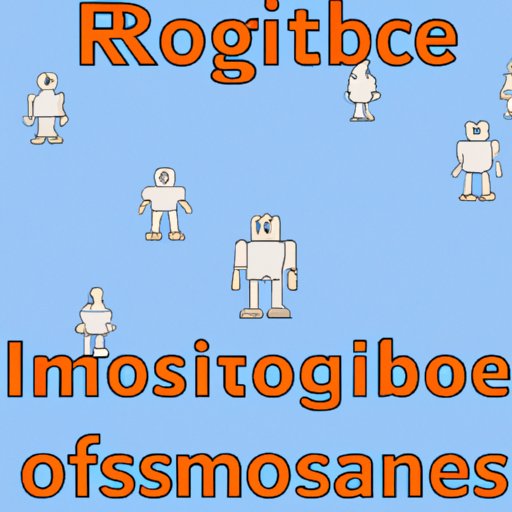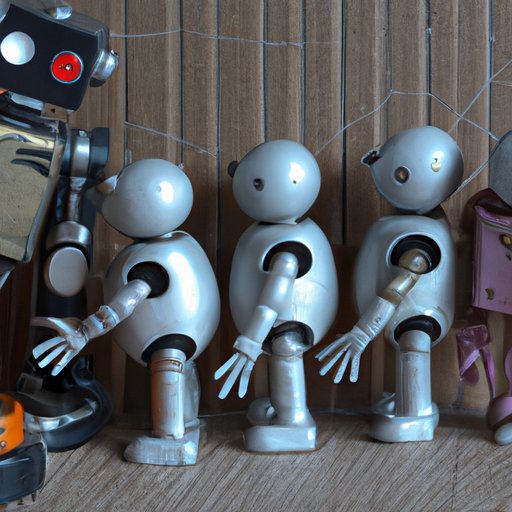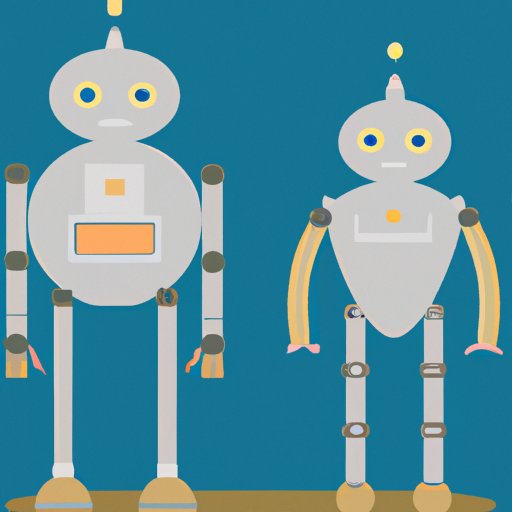Introduction
Robotics is a field of engineering that focuses on the design, construction, and operation of robots. Robots are machines that can carry out complex tasks autonomously or semi-autonomously, often performing functions that would otherwise be too dangerous, difficult, or impossible for humans to do. The invention of robots has had a great impact on society, from industrial production to health care and beyond. But when were robots invented? Let’s explore the history and impact of robotics.
A Historical Look at the Invention of Robots
The concept of robots has been around since ancient times, with references to automatons and mechanical servants in Greek mythology. However, the invention of robots as we know them today began much later.
Pre-Industrial Revolution
The earliest examples of automated machines date back to the 18th century. In 1737, Jacques de Vaucanson created the Digesting Duck, an automaton capable of flapping its wings, quacking, and digesting food. By the 19th century, inventors had begun experimenting with mechanical arms and other devices, but these machines were not yet considered robots.
Industrial Revolution and the Development of Automated Machines
The Industrial Revolution marked a turning point in the development of robotic technology. In the late 19th century, Nikola Tesla demonstrated the first radio-controlled boat. This was followed by the development of programmable looms and other automated machines, which paved the way for the modern computerized robots of today.
20th Century and the Rise of Robotics
In the 20th century, robotics began to take shape as the technology advanced. In 1954, George Devol and Joseph Engelberger developed the first industrial robot, the Unimate. This robot was capable of carrying out simple tasks like welding and painting. Over the next few decades, robots became increasingly sophisticated, with the ability to perform more complex tasks such as assembling cars and handling hazardous materials. By the 1980s, robots were commonplace in factories and other industrial settings.

The Impact of Robotics on Society
The invention of robots has had a profound effect on society. On one hand, robots have made it possible to automate many dangerous and tedious tasks, freeing up human labor for other pursuits. According to a study by the International Federation of Robotics, the use of robots in industry has resulted in “increased productivity, improved product quality, reduced lead times and greater flexibility of production processes.”
On the other hand, robots have also created new challenges. For example, automation has led to job losses in some industries, as robots are able to do the same work as humans but at a much lower cost. Additionally, robots can be used for nefarious purposes, such as espionage or warfare, and their use raises ethical and moral questions.

Exploring the Development Timeline of Robots
To better understand the history of robots, let’s take a look at some of the key milestones in their development.
Early Prototypes
The earliest robots were nothing more than primitive prototypes. In 1948, William Grey Walter developed the first autonomous robots, called Elmer and Elsie. These robots were able to sense their environment and respond to it in appropriate ways. Other early robots included Shakey the Robot (1966) and WABOT-1 (1973), both of which were capable of navigating their environment and understanding instructions.
Key Milestones in Robot Development
The first industrial robot, Unimate, was introduced in 1961. This robot was capable of performing simple tasks such as welding and painting. In 1969, the first robot arm was developed, paving the way for more sophisticated robots. In the 1980s, robots began to be used in manufacturing and other industrial settings, and in the 1990s, robots began to appear in hospitals and other medical facilities. Today, robots are used in a wide range of industries, from agriculture to space exploration.
Pioneers in Robotics: Who Invented the First Robot?
The invention of the first robot is attributed to George Devol and Joseph Engelberger. However, there have been many innovators who have contributed to the development of robotics over the years. Isaac Asimov, for example, is credited with creating the Three Laws of Robotics, which form the basis of modern robotics. Other important figures in the field include Alan Turing, Marvin Minsky, and Hans Moravec.
How Far We’ve Come: Comparing Early and Modern Robotics
Today’s robots are far more advanced than their predecessors. Advances in computing power and artificial intelligence have enabled robots to become smarter, faster, and more accurate. This has opened up a world of possibilities, from self-driving cars to medical robots that can perform surgery. Some of the most impressive applications of robotics include aerial drones, search-and-rescue robots, and robotic vacuum cleaners.
Conclusion
Robots have come a long way since their invention in the mid-20th century. From early prototypes to sophisticated machines, robots have revolutionized the way we live and work. While robots bring many benefits, they also pose certain challenges. As technology continues to advance, it will be interesting to see how robotics will shape our future.
(Note: Is this article not meeting your expectations? Do you have knowledge or insights to share? Unlock new opportunities and expand your reach by joining our authors team. Click Registration to join us and share your expertise with our readers.)
